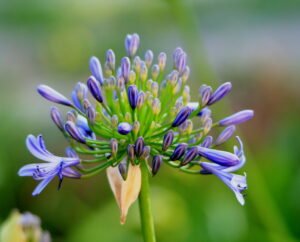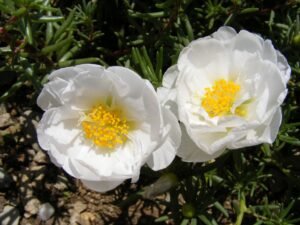Areca Palm Care : All You Need To Know
The Areca Palm, also known as Dypsis lutescens or the Butterfly Palm, is a popular indoor plant that adds a touch of tropical elegance to any space. With its feathery, arching fronds and slender, bamboo-like stems, the Areca Palm is not only visually appealing but also offers numerous benefits for both your physical and mental well-being. If you’re looking to add a touch of tropical beauty to your indoor or outdoor space, the Areca Palm tree is an excellent choice. This article explains in detail how to grow and care for Areca Palm tree.

The Areca Palm holds significant symbolism in Feng Shui, the ancient Chinese practice of harmonizing individuals with their environment. In Feng Shui, the Areca Palm is believed to bring good luck, prosperity, and positive energy into a space.
According to Feng Shui principles, placing an Areca Palm near the entrance of a home or office can attract positive chi (energy) and create a welcoming atmosphere. It is also believed to promote growth, abundance, and harmony.
Facts About Areca Palm
The Areca palm is native to the tropical rainforests of Madagascar, an island located off the eastern coast of Africa. In its natural habitat, it thrives in the understory of the forest, where it receives filtered sunlight and protection from direct sunlight. The warm and humid climate of Madagascar provides the perfect conditions for the Areca palm to grow and flourish.
The Areca Palm is a medium-sized palm tree that can grow up to 20 feet tall. It has multiple trunks that are slender and topped with arching feather-like fronds. The fronds are bright green in color and can reach lengths of up to 8 feet. The plant also produces small yellow flowers that develop into orange or red berries.
When grown indoors, the Areca Palm typically reaches a height of 6 to 8 feet. It is a relatively fast-growing plant and can add a tropical touch to any room within a few years.
One of the key benefits of having an Areca Palm in your home or office is its ability to purify the air. The plant is known for its excellent air-filtering properties and can remove harmful toxins such as formaldehyde, benzene, and trichloroethylene from the surrounding environment. This makes it an ideal choice for improving indoor air quality.
According to a study conducted by NASA, the Areca Palm is one of the most effective plants at removing indoor air pollutants. It can help reduce the levels of toxins that are commonly found in carpets, furniture, and cleaning products, making it beneficial for individuals with respiratory conditions or allergies.
FAQ About Areca Palm
Can I grow an Areca Palm outdoors?
While Areca Palms are primarily grown as indoor houseplants, they can also be grown outdoors in suitable climates. Areca Palms thrive in tropical and subtropical regions where the temperature does not drop below 30°F (-1°C). They prefer well-draining soil and should be protected from strong winds.
Are Areca Palms pet-friendly?
Areca Palms are considered to be non-toxic to cats and dogs, which makes them a pet-friendly choice for households with pets. Nonetheless, it’s wise to keep an eye on your pets among plants and get veterinary advice if you have any concerns.
How fast does an Areca Palm grow?
An Areca Palm can grow relatively fast under optimal conditions. It typically produces one to two new fronds per year, with each frond having multiple leaflets. A number of variables, including light, temperature, humidity, and general care, might affect the growth rate.
How To Care For Areca Palm
Sunlight
Before you bring home an Areca Palm tree, it’s important to find the perfect spot for it to thrive. Areca Palms prefer bright, indirect light, so placing them near a window with filtered sunlight is ideal. Direct sunlight can scorch the leaves, while too little light can result in slow growth and leggy foliage.
Temperature
It’s crucial to take into account the local climate and relative humidity. Areca Palms thrive in temperatures between 65°F and 75°F (18°C and 24°C) during the day and slightly cooler temperatures at night. They also prefer high humidity, so if your home is dry, you may need to use a humidifier or mist the leaves regularly.
Watering
Proper watering is crucial for the health of your Areca Palm tree. As mentioned earlier, it’s important to keep the soil consistently moist, but not waterlogged. Overwatering can cause the roots to rot, while underwatering can lead to dry, brown leaves.
During the warmer months, you may need to water your Areca Palm more frequently, as the soil tends to dry out faster. In winter, when the plant is in its dormant phase, you can reduce the watering frequency. Always check the top inch of soil before watering, and adjust accordingly.
Fertilizing
In addition to regular watering, Areca Palms benefit from regular fertilization. Use a balanced, water-soluble fertilizer formulated for indoor plants. During the growing season, which is typically spring and summer, fertilize your palm every two to four weeks. Lower the frequency to once every two months during the dormant season.
Pruning
Pruning is an essential part of Areca Palm care, as it helps maintain the plant’s shape and remove any dead or yellowing fronds. Use clean, sharp pruning shears to remove any unwanted growth. Be sure to only prune the brown or yellow parts of the fronds, as cutting into the green part can damage the plant.
Regularly dusting the leaves of your Areca Palm will not only keep them looking clean and vibrant but also help the plant absorb more sunlight. Gently wipe the leaves with a damp cloth or use a gentle spray of water to remove any dust or debris.
Repotting
Areca palms prefer slightly crowded roots, so they don’t need to be repotted frequently. However, if you notice the roots growing out of the drainage holes or the plant becoming top-heavy, it may be time to repot.
To avoid waterlogging, choose a pot with drainage holes that is one size larger. Carefully take the palm out of its existing pot, work loose the roots, and transfer it to the new pot. Fill the remaining space with a well-draining potting mix, such as one formulated for palms or tropical plants.
After repotting, water the palm thoroughly and place it in its original location. For a few weeks, refrain from fertilizing the plant to give it time to acclimate to its new surroundings.
Common Issues and Troubleshooting
While areca palms are generally easy to care for, they can encounter a few common issues. Here are some troubleshooting tips:
Yellowing leaves: This can be a sign of overwatering, underwatering, or too much direct sunlight. Change the way you water the plant and relocate it to a better spot.
Brown tips: Dry air or underwatering can cause the tips of the leaves to turn brown. Increase humidity levels and ensure you are watering adequately.
Pests: Areca palms can attract spider mites, mealybugs, and scale insects. Regularly inspect your plant for signs of pests and treat them promptly with the appropriate insecticide.
Root rot: Root rot can result from overwatering or soil that drains improperly. Ensure your pot has drainage holes and adjust your watering routine accordingly.
How To Propagate Areca Palm
Division is a method of plant propagation where a mature plant is divided into smaller sections, each with its own root system. This allows the plant to grow independently and develop into a new individual. Division is commonly used for plants that have multiple stems or clumps of growth, such as the areca palm.
Right Time
The best time to propagate areca palm through division is in the spring or early summer when the plant is actively growing. This is when the plant has the highest chance of successfully establishing new roots.
Tools and Materials
Before you start dividing your areca palm, make sure you have the following tools and materials ready: 1. Sharp and clean pruning shears or a sharp knife 2. Potting soil or a well-draining potting mix 3. Plant pots or containers with drainage holes 4. Watering can or spray bottle 5. Rooting hormone (optional)
Remove the Plant from its Container
Carefully remove the areca palm from its container, taking care not to damage the roots or stems. Gently loosen the soil around the roots to make it easier to divide the plant.
Divide the Plant
Examine the areca palm and identify natural divisions or clumps of growth. Using sharp pruning shears or a knife, carefully separate these clumps into individual sections. There should be distinct roots and stems for every segment.
Prune the Roots and Stems
With sanitized pruning shears, trim any unhealthy or damaged roots. Also, trim any excessive growth or dead leaves from the stems to promote healthy growth in the new divisions.
Plant the Divisions
Fill each pot or container with potting soil or a well-draining potting mix. Make a small hole in the center of each pot and gently place the divided areca palm sections into the holes. Ensure that the roots are covered with soil and the stems are upright.
Water the Divisions
After planting the divisions, water them thoroughly to help settle the soil and promote root establishment. Use a watering can or a spray bottle to avoid overwatering and ensure that the soil is moist but not soggy.
Provide the Right Growing Conditions
Place the newly divided areca palm in a location that receives bright, indirect sunlight. Keep it out of direct sunlight to prevent scorching of the leaves. Uphold a temperature range of 18–29°C (65–85°F) and ensure adequate ventilation.
Care for the New Plants
Continue to water the newly divided areca palm regularly, keeping the soil evenly moist. Avoid overwatering or allowing the soil to dry out completely. Fertilize the plants with a balanced liquid fertilizer every two to four weeks during the growing season to promote healthy growth.
Monitor and Transplant
Keep an eye out for any symptoms of illness or stress in the new plants. If necessary, treat any issues promptly to ensure the health of the areca palm divisions. Once the new plants have established a strong root system and have grown in size, they can be transplanted into larger pots or planted directly in the ground.
Growing and caring for an Areca Palm tree can be a rewarding experience. By providing the right amount of light, water, and nutrients, you can enjoy the beauty of this tropical plant in your home or garden. Remember to choose a suitable location, use well-draining soil, and water and fertilize your palm regularly. With proper care, your Areca Palm will thrive and bring a touch of paradise to your space.






